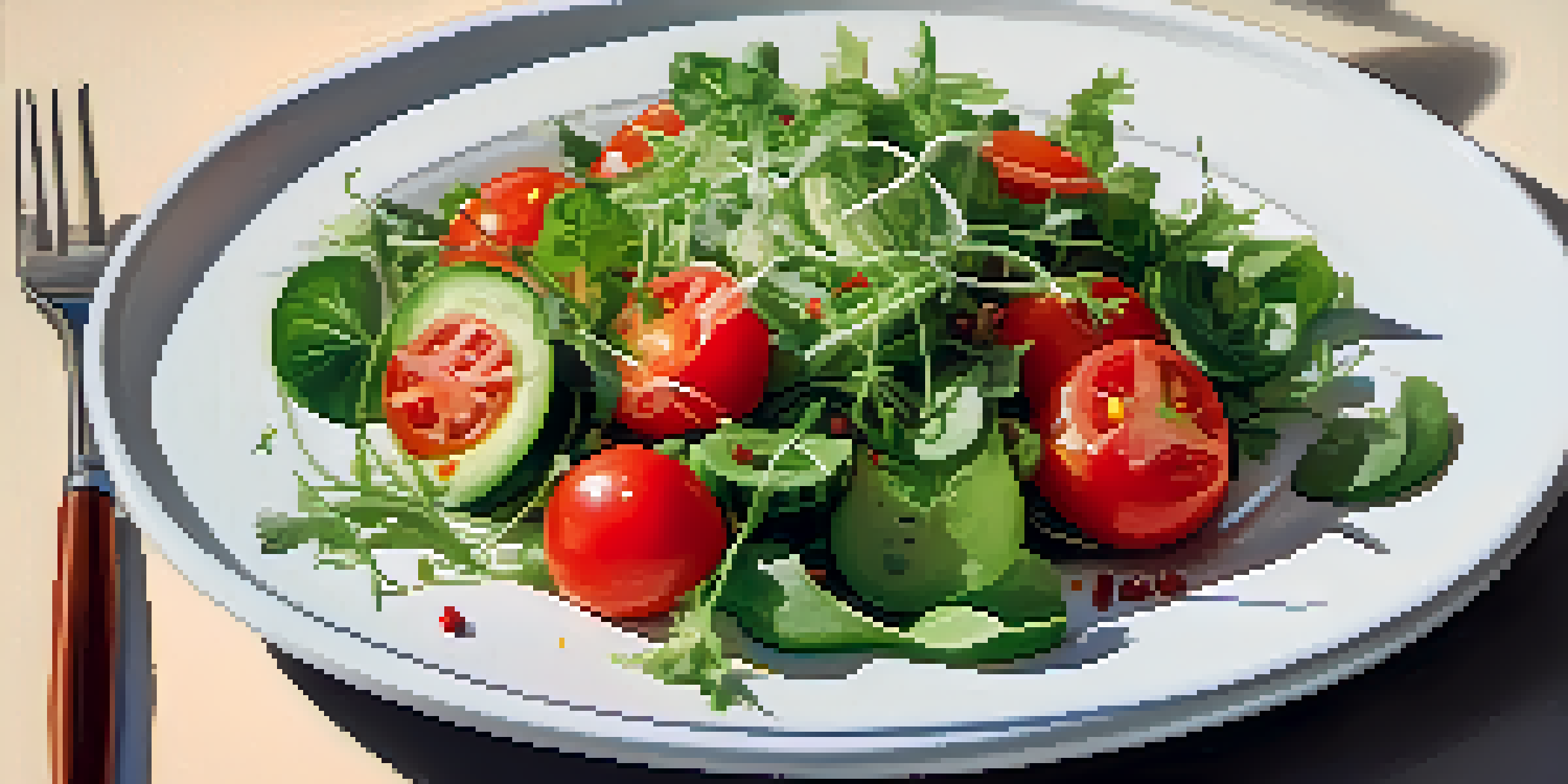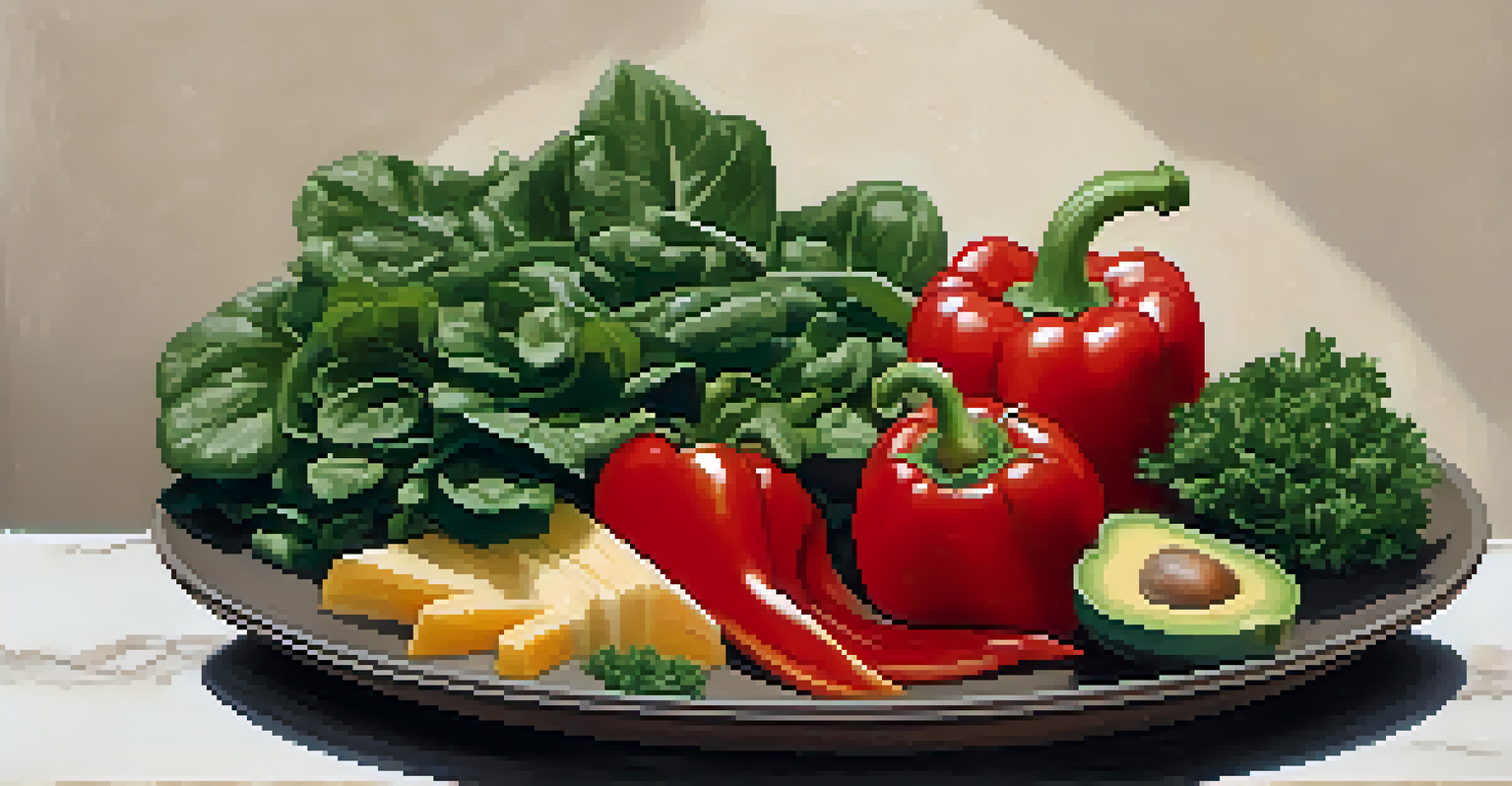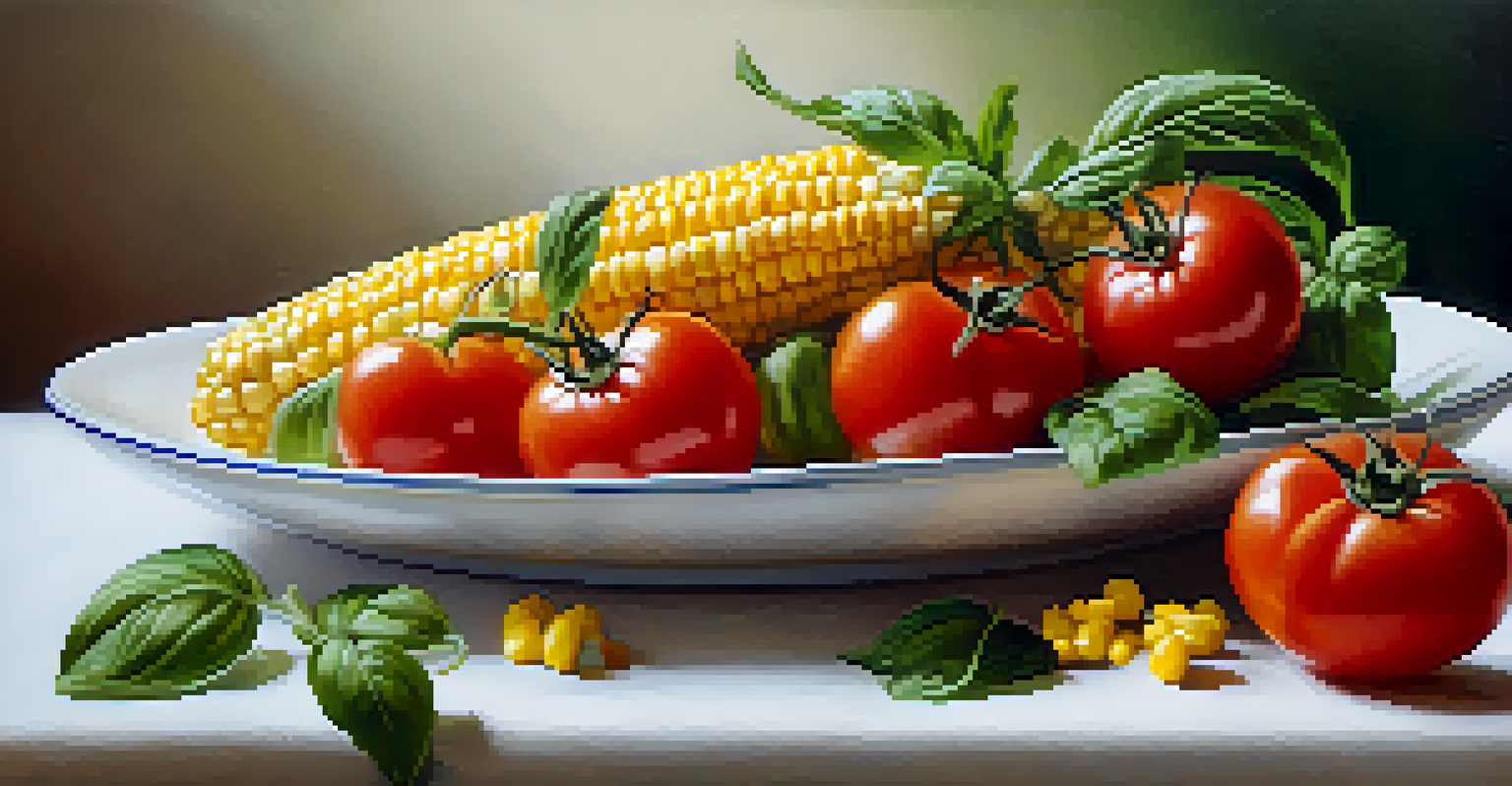The Art of Minimalism: Simple Plating for Raw Foods

Understanding Minimalism in Food Presentation
Minimalism in food presentation is all about simplicity and clarity. It focuses on reducing clutter to highlight the most important elements of the dish—much like a beautifully framed painting that draws attention to the artwork itself.
Simplicity is the ultimate sophistication.
In the context of raw foods, minimalism allows the natural colors and textures of ingredients to shine. Think about a vibrant salad with fresh greens, bright tomatoes, and crunchy cucumbers presented on a simple white plate; the colors pop without any distractions.
This aesthetic not only makes the food more appealing but also encourages a mindful eating experience. When we strip away the unnecessary, we can better appreciate the flavors and qualities of each ingredient.
Choosing the Right Plate for Presentation
The type of plate you select plays a significant role in minimalist plating. Opt for simple, solid colors, such as white or muted earth tones, which can enhance the natural beauty of raw ingredients.

Avoid overly ornate or patterned dishes, as they can compete for attention with the food itself. Instead, think of your plate as a canvas where the dish can take center stage, much like a blank canvas awaits an artist's brush.
Simplicity Enhances Food Appeal
Minimalist food presentation highlights the natural beauty of ingredients, making the dish more visually appealing.
Additionally, the size of the plate matters; smaller plates can create a sense of abundance while keeping the presentation neat. This can make your raw food dishes appear more intentional and inviting.
Emphasizing Color and Texture in Raw Foods
When plating raw foods, focus on showcasing the vibrant colors and varied textures of your ingredients. For instance, a bowl filled with bright red bell peppers, deep green kale, and creamy avocado creates visual excitement.
The best meals are those prepared with love and simplicity.
Textural contrast is key; combine crunchy vegetables with soft fruits or nuts to create an engaging mouthfeel. Imagine biting into a crisp cucumber slice followed by the creaminess of avocado—it’s a delightful experience.
Using garnishes like fresh herbs or edible flowers can also enhance the visual appeal without overwhelming the dish. A few strategically placed basil leaves can add a pop of green and elevate your presentation.
Using Negative Space Effectively
Negative space refers to the empty space around your food that can help emphasize its beauty. In minimalist plating, this is crucial; leaving space on the plate allows the eye to focus on the food itself.
For example, if you have a beautifully arranged salad, consider leaving some empty space on the plate to create a balanced composition. This technique draws attention to the colors and shapes of your ingredients, making the dish more appealing.
Negative Space Matters
Using negative space in plating emphasizes the food, drawing the eye to its colors and shapes.
Think of it as a well-composed photograph; the subject stands out more when there's a clear background. Embracing negative space can elevate your raw food presentation to an art form.
Creating Height and Dimension in Your Plating
Adding height to your raw food dishes can create visual drama and intrigue. Stack ingredients or use molds to shape salads or parfaits, giving the dish a three-dimensional quality.
For instance, layering sliced veggies in a vertical tower or using a ring mold to shape quinoa can make the presentation more dynamic. This not only looks impressive but also invites curiosity about how the dish is structured.
Height can also enhance the dining experience, encouraging diners to engage with the dish as they explore its layers and components. Think of it as a mini culinary adventure on a plate.
Incorporating Seasonal Ingredients Mindfully
Using seasonal ingredients not only elevates flavor but also promotes a sense of connection to nature. When you choose ingredients that are in season, you're naturally aligning with the principles of minimalism.
For example, a summer platter featuring ripe tomatoes, sweet corn, and fresh basil can create a vibrant, flavorful presentation. These ingredients not only look great but also taste their best, enhancing the overall dining experience.
Mindfulness in Eating
Minimalist plating encourages a mindful eating experience, inviting diners to savor each bite and appreciate the meal.
Mindfully selecting seasonal produce also supports sustainability and reduces food waste, reinforcing the minimalist philosophy of simplicity and intentionality in our choices.
The Mindful Eating Experience through Minimalism
Minimalist plating encourages a mindful approach to eating. When your food is presented simply, it invites you to slow down and savor each bite, enhancing your overall experience.
By focusing on the aesthetics of your dish, you create an environment that fosters appreciation for the flavors and textures of raw foods. This mindfulness can transform a meal into a sensory journey rather than just a routine.

Consider dining without distractions, allowing the beauty of your minimalist presentation to draw you in. This practice not only enriches your appreciation for the meal but also promotes a deeper connection with the food you consume.